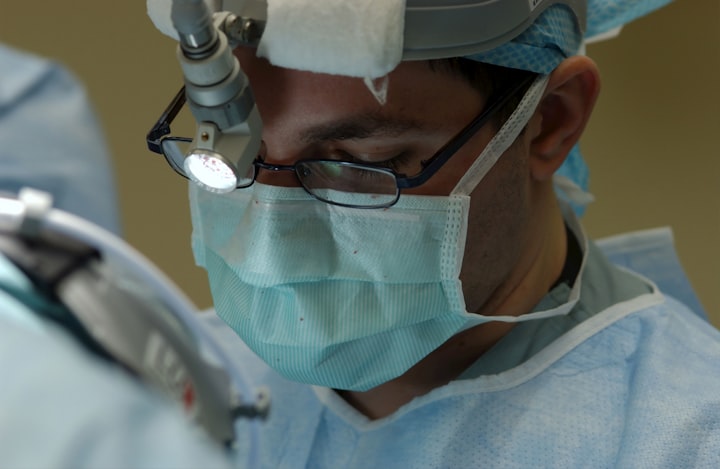Misdiagnosis Alert: Conditions That Resemble but Are Not Chronic Prostatitis
What diseases are similar to chronic prostatitis?

Chronic prostatitis is a common male disease, but many patients often confuse it with other urologic diseases, leading to misdiagnosis. What are some of the diseases that resemble chronic prostatitis? How do people accurately identify them?
Chronic prostatitis is a common genitourinary disease, mainly including chronic bacterial and non-bacterial two parts. Due to the complexity and variety of its etiology, pathological changes, clinical symptoms, and impact on men's sexual and reproductive functions, it seriously affects the quality of life of patients, causing them to suffer greatly both mentally and physically.
The traditional Chinese medicine Diuretic and Anti-inflammatory Pill is a good choice for patients whose life is affected by recurring episodes of the condition. Patients can take it orally to relieve symptoms, eliminate inflammation, and restore health.
The main symptoms of chronic prostatitis include these:
Urinary Discomfort: Patients may experience bladder irritation, such as frequent urination, burning, and pain in the urethra during urination and radiating to the head of the penis. In the morning, there may be mucus and other secretions from the urethra opening, and there may also be a feeling of urination difficulty.
Local Symptoms: Discomfort in the posterior urethra, perineum, and anus, which is aggravated by squatting defecation and prolonged sitting on a chair or stool.
Radiating Pain: The pain of this disease is not limited to the urethra and perineum but also radiates to its vicinity, with lower back pain being the most common. In addition, the penis, spermatic cord, testicular scrotum, abdomen, groin area (thigh root), thighs, rectum and other places can be involved.
Sexual Dysfunction: Chronic prostatitis can cause loss of libido and ejaculation pain, premature ejaculation, etc., but it also affects the quality of semen. Patients may also experience white liquid in the urethral opening after urination or during bowel movements, and hematospermia may occur when combined with seminal vesiculitis.
Other Symptoms: This disease can be combined with neurasthenia, showing weakness, dizziness, insomnia, etc. Long-term persistent inflammation can even cause the body's metamorphosis, conjunctivitis, arthritis, and other lesions.
Since many urological diseases can cause the same symptoms mentioned above, it is easy to confuse other diseases with chronic prostatitis in life. Therefore, men should pay attention to identifying:
1. Prostate Abscess: This is a complication of acute bacterial prostatitis, which mostly occurs in men aged 50-60. Patients usually have symptoms such as acute urinary retention, frequent urination, urination difficulty, rectal discomfort, and urethral pus, and some are accompanied by epididymitis. On rectal palpation, the diseased side of the prostate is enlarged, soft to the touch, and fluctuating.
2. Prostate Pain: These patients present with persistent, frequent, and painful urination, urination difficulty, pain, and discomfort in the perineum, lower abdomen, and lumbosacral region, which is aggravated by prolonged sitting and cycling. Rectal palpation examination of both sides of the anorectal muscle tenderness is obvious, and the prostate is normal on palpation without tenderness. In the past, this syndrome was known as pyriformis anorectalis syndrome, characterized by normal prostate fluid microscopy and no growth on bacterial culture.
3. Prostate Tuberculosis: Symptoms are similar to those of chronic prostatitis, but there is often a history of urinary tuberculosis or tuberculous lesions elsewhere. Rectal palpation examination showed an irregular nodular, the epididymis was enlarged and hardened, and the vas deferens had beaded hard nodules. Mycobacterium tuberculosis is present on direct smear or PCR of prostate fluid.
4. Prostate Stones: These are stones that occur in the follicles and ducts of the prostate and are associated with inflammation of the location, retention of prostatic fluid, narrowing of the ducts, and metabolic disorders. Inorganic salts such as calcium oxalate, calcium phosphate, and magnesium phosphate are deposited on amyloid, epithelial cells, and inflammatory exudates within the prostate follicles to form stones.
Patients may show various symptoms of chronic prostatitis, but in the rectal examination, there is a stone friction sensation when touching the prostate, pelvic X-ray has a positive stone shadow on the side of the pubic symphysis area, and ultrasonography can show a strong band of light in the site of prostate stones with acoustic shadows.
5. Pubic Bone Osteitis: clinically, it is often manifested as the symptoms of chronic prostatitis, but anal diagnosis and prostatic fluid examination are normal. The main feature is obvious pressure pain at the pubic symphysis; pelvic X-ray film shows a widening of the pubic symphysis gap of more than 10mm, the bilateral difference in the level of the suprapubic branch is more than 2mm, irregularity of the margins of the pubic symphysis, erosion, and reactive osteosclerosis.
6. Prostate Cancer: symptoms such as frequent urination, painful urination, and urination difficulty can be seen in the advanced stage, but patients often have obvious systemic symptoms such as emaciation, fatigue, anemia, and loss of appetite. Rectal palpation of the prostate shows a hard stone-like mass with an uneven surface, and serum prostate-specific antigen and prostate acid phosphatase are increased. Puncture prostate biopsy can find cancer cells, ultrasonography can see the gland enlarged, border echogenicity is not neat or defective, internal light spot is not uniform, and there are brighter light spots or light clusters in the cancerous area.
A CT examination can show asymmetric morphology of the prostate. If the tumor infiltrates out of the peripheral membrane, it can be seen that the tissue gap in the seminal vesicles and the posterior wall of the bladder has disappeared.CT can determine the degree of infiltration of prostate cancer.
7. Acute Pyelonephritis: This disease is most common in women and very rare in men. Acute pyelonephritis causes low back pain, mostly in one side of the kidney area, and percussion pain is obvious. Low back pain due to acute prostatitis is mostly in the center of the lumbosacral region, with no percussion pain in the renal region. A large number of pus cells can be seen in the prostatic fluid of acute prostatitis, and acute pyelonephritis is mainly a change in the nature of urine.
As you can see from the above, although the same symptoms may exist, the examination indicators and the basis for judgment are different for various diseases. To accurately distinguish chronic prostatitis from these diseases, it is best to do a professional examination and never judge on your own. Timely examination is the most important step in treating any kind of disease.
About the Creator
Amanda Chou
Looking to restore your life troubled by prostatitis, epididymitis, seminal vesiculitis and other male reproductive system diseases? Here are the resource to help you in this endeavor.
Enjoyed the story? Support the Creator.
Subscribe for free to receive all their stories in your feed. You could also pledge your support or give them a one-off tip, letting them know you appreciate their work.






Comments
There are no comments for this story
Be the first to respond and start the conversation.